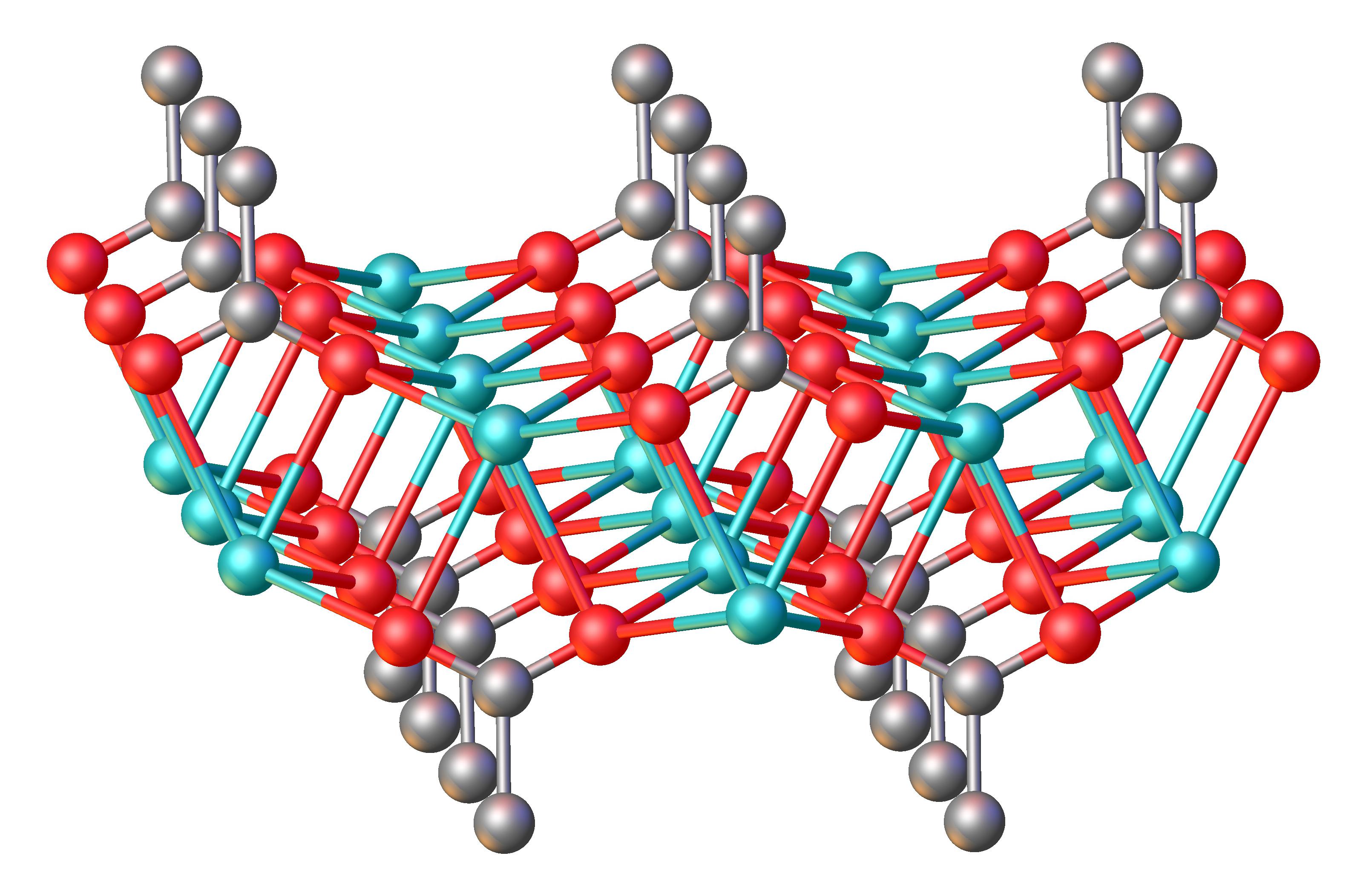Sodium Propionate on:
[Wikipedia]
[Google]
[Amazon]
Sodium propanoate or sodium propionate is the
 Anhydrous sodium propionate is a polymeric structure, featuring trigonal prismatic Na+ centers bonded to six oxygen ligands provided by the carboxylates. A layered structure is observed, with the hydrophobic ethyl groups projecting into the layered galleries. With hydrated sodium propionate, some of these Na-carboxylate linkages are displaced by water.
Anhydrous sodium propionate is a polymeric structure, featuring trigonal prismatic Na+ centers bonded to six oxygen ligands provided by the carboxylates. A layered structure is observed, with the hydrophobic ethyl groups projecting into the layered galleries. With hydrated sodium propionate, some of these Na-carboxylate linkages are displaced by water.
Sodium propanoate
at Sci-toys.com {{Ophthalmological anti-infectives Propionates Organic sodium salts E-number additives
sodium
Sodium is a chemical element; it has Symbol (chemistry), symbol Na (from Neo-Latin ) and atomic number 11. It is a soft, silvery-white, highly reactive metal. Sodium is an alkali metal, being in group 1 element, group 1 of the peri ...
salt
In common usage, salt is a mineral composed primarily of sodium chloride (NaCl). When used in food, especially in granulated form, it is more formally called table salt. In the form of a natural crystalline mineral, salt is also known as r ...
of propionic acid
Propionic acid (, from the Greek language, Greek words πρῶτος : ''prōtos'', meaning "first", and πίων : ''píōn'', meaning "fat"; also known as propanoic acid) is a naturally occurring carboxylic acid with chemical formula . It is a ...
which has the chemical formula
A chemical formula is a way of presenting information about the chemical proportions of atoms that constitute a particular chemical compound or molecule, using chemical element symbols, numbers, and sometimes also other symbols, such as pare ...
Na( C2 H5 C O O). This white crystalline solid is deliquescent
Hygroscopy is the phenomenon of attracting and holding water molecules via either absorption (chemistry), absorption or adsorption from the surrounding Natural environment, environment, which is usually at normal or room temperature. If water mol ...
in moist air.
Reactions
It is produced by the reaction ofpropionic acid
Propionic acid (, from the Greek language, Greek words πρῶτος : ''prōtos'', meaning "first", and πίων : ''píōn'', meaning "fat"; also known as propanoic acid) is a naturally occurring carboxylic acid with chemical formula . It is a ...
and sodium carbonate
Sodium carbonate (also known as washing soda, soda ash, sal soda, and soda crystals) is the inorganic compound with the formula and its various hydrates. All forms are white, odourless, water-soluble salts that yield alkaline solutions in water ...
or sodium hydroxide
Sodium hydroxide, also known as lye and caustic soda, is an inorganic compound with the formula . It is a white solid ionic compound consisting of sodium cations and hydroxide anions .
Sodium hydroxide is a highly corrosive base (chemistry), ...
.
Uses
It is used as a foodpreservative
A preservative is a substance or a chemical that is added to products such as food products, beverages, pharmaceutical drugs, paints, biological samples, cosmetics, wood, and many other products to prevent decomposition by microbial growth or ...
and is represented by the food labeling E number
E numbers, short for Europe numbers, are codes for substances used as food additives, including those found naturally in many foods, such as vitamin C, for use within the European Union (EU) and European Free Trade Association (EFTA). Commonly ...
E281 in Europe; it is used primarily as a mold inhibitor in bakery products. It is approved for use as a food additive
Food additives are substances added to food to preserve flavor or enhance taste, appearance, or other sensory qualities. Some additives, such as vinegar ( pickling), salt ( salting), smoke ( smoking) and sugar ( crystallization), have been used f ...
in the EU, USA and Australia and New ZealandAustralia New Zealand Food Standards Code (where it is listed by its INS number
The International Numbering System for Food Additives (INS) is an international naming system for food additives, aimed at providing a short designation of what may be a lengthy actual name."Class Names and the International Numbering System for Fo ...
281).
Structure
 Anhydrous sodium propionate is a polymeric structure, featuring trigonal prismatic Na+ centers bonded to six oxygen ligands provided by the carboxylates. A layered structure is observed, with the hydrophobic ethyl groups projecting into the layered galleries. With hydrated sodium propionate, some of these Na-carboxylate linkages are displaced by water.
Anhydrous sodium propionate is a polymeric structure, featuring trigonal prismatic Na+ centers bonded to six oxygen ligands provided by the carboxylates. A layered structure is observed, with the hydrophobic ethyl groups projecting into the layered galleries. With hydrated sodium propionate, some of these Na-carboxylate linkages are displaced by water.
See also
*Propionic acid
Propionic acid (, from the Greek language, Greek words πρῶτος : ''prōtos'', meaning "first", and πίων : ''píōn'', meaning "fat"; also known as propanoic acid) is a naturally occurring carboxylic acid with chemical formula . It is a ...
, E 280
* Calcium propionate, E 282
* Potassium propionate
Potassium propanoate or potassium propionate has formula K(C2H5COO). Its melting point is 410 °C. It is the potassium salt of propanoic acid.
Use
It is used as a food preservative and is represented by the food labeling E number
E numbe ...
, E 283
References
External links
Sodium propanoate
at Sci-toys.com {{Ophthalmological anti-infectives Propionates Organic sodium salts E-number additives